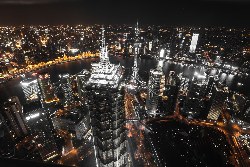Light Rail Beguiling But Wrong Answer
The Government’s recent announcements that they are to accelerate the procurement process for light rail to the airport and to the NorthWest including Kumeu, exaggerates the viability of the project says the Public Transport Users Association.
Funding tools on offer such as the New Zealand SuperFund and the new regional fuel tax are beguiling, but don’t make light rail the best choice, says PTUA chair Christine Rose. “For both the airport and Kumeu, heavy rail services offer better value for money and faster delivery”.
“We’re worried decision makers are beguiled by new funding tools, into pursuing more expensive options than necessary”. “Plans for light rail to the west are based on unrealistic timeframes, and reduce communities, topography, coastal areas and existing infrastructure constraints to simple bold lines on maps where nothing – not finances, timing, election cycles, or practicalities can stand in the way”.
“Plans for light rail ignore existing lines on the railway network, in particular, the North Auckland Line beyond Swanson and out through Kumeu; which local communities and advocates argue should be revived for passenger services in advance of expensive new light rail on a whole new corridor”.
The Public Transport Users Association’s ‘Trains to Huapai’ campaign supports regular rail passenger services beyond the current Swanson terminus, using lines, rolling stock and stations that already exist. The campaign has the support of local boards, councillors and communities in Rodney and Waitakere.
Mrs Rose, a Kumeu local, says “new and old growth in the area is oriented around rail, but sits like a bride without a groom”. “People lured to the area by the apparent benefit of a railway line are surprised and appalled that no services run. In every consultation by Auckland Transport, Auckland Council and the Rodney Local Board, calls for trains to Huapai are a clamour”.
The Trains to Huapai campaign also has support from Swanson residents swamped by commuters from the far west driving over the Waitakere hill to catch the train from the new and now full Swanson Park and Ride. Waitakere township’s refurbished park and ride sits empty since rail services stopped in 2015.
“It’s a clamour that’s ignored by the powers that be, preferring a hypothetical, un-costed, light rail service that no-one really believes will reach Kumeu any time soon”.
The Minister of Transport, Urban Development and Housing, Phil Twyford, suggests the Kumeu valley could accommodate another 20-30,000 houses. He argues for the removal of the Rural Urban Boundary, inaccurately perceiving that it’s an impediment to growth. Special Housing Areas fast-tracked by the previous Government have brought thousands of new residents to this already growing peri-urban zone. Transport routes have become immobilised by the influx of vehicles arising from the housing boom. The 18,000+ vehicles a day through Kumeu, are doubled in the weekend, and traffic on the one-lane-each-way State Highway 16, is stationary in both directions at many times of night and day.
A survey just conducted by the Public Transport Users Association conservatively estimated social and economic congestion costs to Kumeu commuters of four million hours a year and $30million.
The plans for light rail along the North Western corridor promise services within an improbable six year time frame, and combined with the questionable proposition of light rail to the airport, come to a conservative estimated cost of $6billion.
PTUA co-ordinator, Jon Reeves, says the most-cost effective modes, heavy rail to Kumeu and the airport, should be pursued, especially now the price of fuel is at an all-time high – even before the new regional fuel tax to pay for it all, is applied. “Just because we can, doesn’t mean we should spend more money than we need to. The regional fuel tax and use of the SuperFund still come at a cost”. He says transport lobbyists Greater Auckland oppose the use of the existing rail line to Kumeu. “They say, ‘it’s too expensive’; ‘no one would use it’; ‘people don’t all go into the city to work”; “The Waitakere tunnel is too narrow”. Yet they accept at face value, the creation of a whole new rapid transit corridor with an unrealistic timeframe, which entails ripping up just-laid motorway lanes, massive added community severance, the destruction of houses, sports fields, school precincts, reserves, the coastal marine area and existing infrastructure to create a transport corridor at least 15 lanes wide in part”. “Other than following the existing State Highway in a swathe, the route is unclear, as is how to retrofit NorthWestern light rail into the constrained central city. Feeder routes and services from NorthWest suburbs would still also be required”.
Mrs Rose says “With technology and enough money, of course anything is possible”.” But using existing, dedicated rail corridors must be cheaper, and a better fit with the government’s claimed support for regional rail renewal – even including the costs of widening the Waitakere tunnel (not essential) and investing in improved or additional diesel rolling stock. Even electrifying the North Auckland Line to Kumeu from Swanson must be cheaper than a whole new light rail line”.
ENDS
http://www.trainstohuapai.org/
https://www.facebook.com/trainstohuapai/?notif_t=page_fan¬if_id=1500227634160459


 Gordon Campbell: On Fast Track Powers, Media Woes And The Tiktok Ban
Gordon Campbell: On Fast Track Powers, Media Woes And The Tiktok Ban Government: Urgent Changes To System Through First RMA Amendment Bill
Government: Urgent Changes To System Through First RMA Amendment Bill Peace Movement Aotearoa: Global Military Spending Increase Threatens Humanity And The Planet
Peace Movement Aotearoa: Global Military Spending Increase Threatens Humanity And The Planet Government: To Introduce Revised Three Strikes Law
Government: To Introduce Revised Three Strikes Law Labour Party: Environmental Protection Vital, Not ‘Onerous’
Labour Party: Environmental Protection Vital, Not ‘Onerous’ Greenpeace: Elevated Levels Of Nitrate Contamination Found In Canterbury Drinking Water
Greenpeace: Elevated Levels Of Nitrate Contamination Found In Canterbury Drinking Water Government: Trade Relationship With China Remains Strong
Government: Trade Relationship With China Remains Strong


